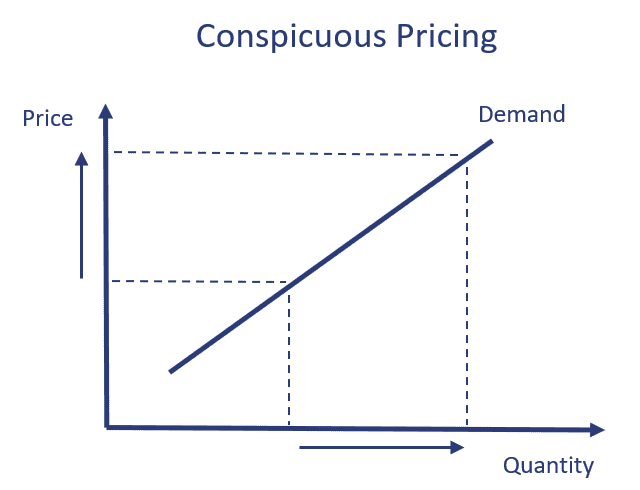Conspicuous Consumption
Conspicuous consumption describes wealthy consumers’ tendency to buy, use or consume goods of higher quality, price or in greater quantity than practical. The concept of conspicuous consumption was first described by the sociologist Thorstein Veblen. Veblen described the concept and wealthy people’s behavior more generally in a book called “The Theory of the Leisure Class” that was published in 1899.
Luxury companies will try to take advantage of consumers’ willingness to take part in conspicuous consumption. This is the case since expensive luxury products allow consumers to publicly display economic power and to overpay to become part of an exclusive group of consumers that are able to afford the products.
More generally, goods where the demand for the goods goes up when the price goes up are called Veblen goods after Thorstein Veblen. Veblen goods clearly violate the law of demand, which states that demand should go down as prices go up.
Examples of Veblen goods are expensive watches, cars, jewelry, expensive food, etc. The high prices for these goods are meant to create an exclusive image. The more expensive the goods become, the more attractive they become to some.
Conspicuous pricing
But what determines whether a consumer will be willing to pay a premium for a good?
Conspicuous pricing is the pricing strategy that is aimed specifically at convincing consumers that the product is exclusive and worth (over)paying for. It involves setting prices at a high level, in order to create a perception of exclusivity or luxury associated with the product or service. This strategy is often used by companies that want to appeal to high-end consumers who are willing to pay a premium for quality and prestige.
There are several factors that can determine the effectiveness of conspicuous pricing as a pricing strategy:
- The quality of the product or service: Consumers are more likely to pay a premium price for high-quality products or services
- The perceived exclusivity of the product or service also matters: consumers may be willing to pay more if they perceive the good or product as being exclusive or hard to obtain
- The consumer’s income and wealth: High-end consumers who have a high income or wealth may be more willing to pay a premium price for a product or service
- The consumer’s status-seeking behavior: Some consumers may be more willing to pay a premium price in order to show off their wealth or status to others
Conspicuous pricing can be a successful strategy for companies that offer high-quality products or services and that are successfully able to create a perception of exclusivity or luxury.
At the same time, conspicuous pricing can be a risky strategy if consumers do not buy the story. That is, consumers don’t perceive the value of the product or service to be worth the premium price. Hence, higher prices are not a sufficient condition to create an exclusive image. There has to be a story behind it as well.
Summary
Conspicuous consumption is an important concept both in behavioral finance and sociology. It explains why the demand for some goods increases with price. Such goods are called Veblen goods.

